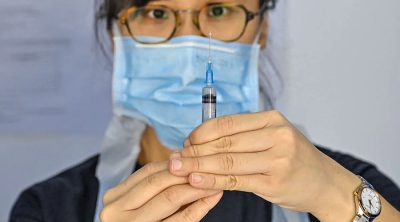Sin Chew Daily
The spread of the Omicron variant far outpaces all other virus strains. Since the first COVID-19 case involving the Omicron was reported in Botswana, southern Africa on November 9 last year, and WHO’s classification of it as a “variant of concern” on November 24, the virus strain is now present in 156 countries worldwide in just 40 days, 16 of which having more than 50% of their new cases involving this strain, with the UK as high as 97% and around 80% for the US and Russia.
The emergence of the new variant has tensed health authorities worldwide, and this is easily understandable. The last variant Delta was causing tremendous havoc to humanity, and if the mortality rate caused by the Omicron variant is 1.87%, then it is going to be real bad. But luckily this is not the case.
WHO statistics show that as of January 4, only 155 deaths were reported out of 494,000 confirmed Omicron cases worldwide, at a mortality rate of only 0.031%, meaning only three deaths out of every 10,000 infections.
Omicron’s threat may have been exaggerated. December 1 last year, renowned German public health specialist Karl Lauterbach predicted that Omicron could be a Christmas gift for humanity.
He said there were many mutations in Omicron. This means that while the virus would get more transmissive, it will not cause severe disease. As such, the pandemic could be ended earlier than expected with the emergence of this variant, so long as we take the necessary precaution.
While Omicron is still spreading fast across the world, the incidence of severe disease is at least 70% lower compared to Delta. Chief medical advisor to the US president Anthony Fauci said the US was currently experiencing a Covid “tsunami” (1.042 million new cases reported on Monday alone), but this “tsunami” will not last long.
During the height of the pandemic in South Africa, more than 100,000 people were infected with the coronavirus, but the number fell to only 3,076 on Tuesday, sparking hope of “herd immunity” and a ray of hope for the pandemic’s early end.
In the United States, almost 430,000 positive cases were reported on Tuesday, but only 767 deaths at a mere 0.18%, attesting to the fact that Omicron’s fatality rate is much lower than previous variants.

Studies show that Omicron will only affect the upper respiratory tract (nose and throat but will not invade the lungs), which is another piece of good news.
We begin to know more about the Omicron variant more than 50 days after its existence was first reported.
1. It transmits fast, but with the incidence of severe disease only 10% of other variants. While in the past other virus variants killed 1,870 out of every 100,000 people infected, Omicron only kills around 100.
2. Receiving a third booster dose of vaccine will significantly boost the immunity to over 85%. If infection rate is low, severe illness and fatality rate is also low, that means this pandemic is moving into its end stage.
3. SOP compliance is mandatory. Keep safe social distances, put on a face mask at all times and enhance personal hygiene awareness to drastically reduce the rate of infection.
4. Currently Omicron targets only unvaccinated individuals, including the minors yet to be vaccinated. There is therefore a direct correlation between vaccination and immunity.
Judging from the low mortality rate, perhaps we can predict that human effort to fight the virus is on the verge of success. Take al look at the 2%-3% mortality rate of the Spanish flu (H1M1) in 1918 (some statistics put it at 10%), almost the same as the 2% mortality of COVID-19. Meanwhile, the mortality rates for the H2N2 pandemic in 1957 and H3N2 in the US in 2017 were 0.3%-0.7% and 0.13% respectively.
Which means, the 0.03%-0.18% mortality rate of Omicron is approaching that of common flu. This probably gives us some good reason to view the pandemic’s development in a more positive light.
ADVERTISEMENT
ADVERTISEMENT








































